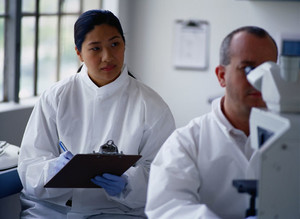It is well known that the introduction of similar biological medicinal products, or biosimilars, has caused not a little controversy in the medical world. The aim of healthcare providers/payers, either healthcare authorities or insurance companies, is to reduce the healthcare budget has risen in recent years through the introduction of expensive companion diagnostics, devices, and drugs. At the present moment this can only be achieved in two general ways: either the availability of therapies must be restricted from the patients who would benefit from them, or otherwise the costs of the procedures and drugs must be reduced to within affordable limits so that the majority of patients can benefit from them.
Professor Simoens and Dr Godman et al, in their latest articles to be published in the first issue of GaBI Journal, provide insights into the many factors that are influencing the price levels of generic medicines in European countries [1, 2]. Professor Dingermann, also in the first issue of the GaBI Journal, states that some biological therapies can cost Euros 500,000 or more per patient per year and if the patients themselves, or their healthcare system cannot afford to pay, then they simply cannot be used [3]. With the duration and cost of the clinical development phase of biosimilars being shorter than their originator products, less expensive biosimilars are thus an attractive option.
If patients can benefit from the therapeutic effects of biopharmaceuticals due to an affordable price, then this would appear to be an ideal solution for all concerned. However, a great deal of controversy exists in the medical profession due to the potential differences that biosimilars may have from the original, innovator products. If the biosimilars were truly comparable and interchangeable with their reference biopharmaceutical product in terms of its quality, efficacy, and quality then there would be no debate, but under the present regulatory procedures for the acceptance of biosimilars on the market it can be argued that we simply do not have sufficient data to either confirm or deny this [4].
Standard generic medicines, produced by highly controlled and reproducible chemical reactions with well-defined and stable chemical structures, are not comparable to biosimilars. This is because biopharmaceuticals are medicines whose active drug substances are polypeptides, glycoproteins, proteins, and nucleic acids and are manufactured through the use of living organisms or derived from a living organism via genetic manipulation. The final biopharmaceutical product is thus much more complex than traditional drugs and is affected by many more intrinsic and external parameters [5]. Biopharmaceuticals also have varying potentials for immunogenicity that will differ between the originator and the biosimilar according to a number of factors, including each step of the manufacturing process.
Because of this, Professor Declerck states that in the absence of extensive and specific data referring to the actual interchangeability of the originator biopharmaceutical and the biosimilar, any measures taken by healthcare payers to control budgets by encouraging the use of lower cost biopharmaceutical therapies should include a mechanism that prevents switching between products in a patient [5].
On the other hand, Professor Schellekens is of the opinion that the clinical trials required by European regulators to compare biosimilars and their corresponding originator product are not needed and may even be a barrier for the development of future, more advanced biopharmaceuticals [6].
It is clear that there are opposing opinions when it comes to biosimilars. Where do you stand and what do you think should be done on a scientific or legislative level to both accelerate the development and marketing of advanced therapies to the patients that need them and also to ensure the patients safety? What, in your opinion are the most important points to consider and how should we resolve them?
Please feel free to leave a comment below or contact us at editorial@gabionline.net.
If you are interested in contributing a research article in a similar area to the GaBI Journal, please send us your submission via science@gabi-journal.net.
References
1. Simoens S. A review of generic medicine pricing in Europe. Generics and Biosimilars Initiative Journal (GaBI J). 2012;1(1):8-12.
2. Godman B, Wettermark B, Bishop I, Burkhardt T, Fürst J, Garuoliene K, et al. European payer initiatives to reduce prescribing costs through use of generics. Generics and Biosimilars Initiative Journal (GaBI J). 2012;1(1):22-7.
3. Dingermann T. Innovator companies should focus on innovations. Generics and Biosimilars Initiative Journal (GaBI J). 2012;1(1):6.
4. Declerck PJ, Darendeliler F, Góth M, Kolouskova S, Micle I, Noordam C, et al. Biosimilars: controversies as illustrated by rhGH. Curr Med Res Opin. 2010;26(5):1219-29.
5. Declerck PJ. Biologicals and biosimilars: a review of the science and its implications. Generics and Biosimilars Initiative Journal (GaBI J). 2012;1(1):13-6.
6. Schellekens H, Moors E. Clinical comparability and European biosimilar regulations. Nature. 2010;28(1):28-31.








 0
0











Post your comment